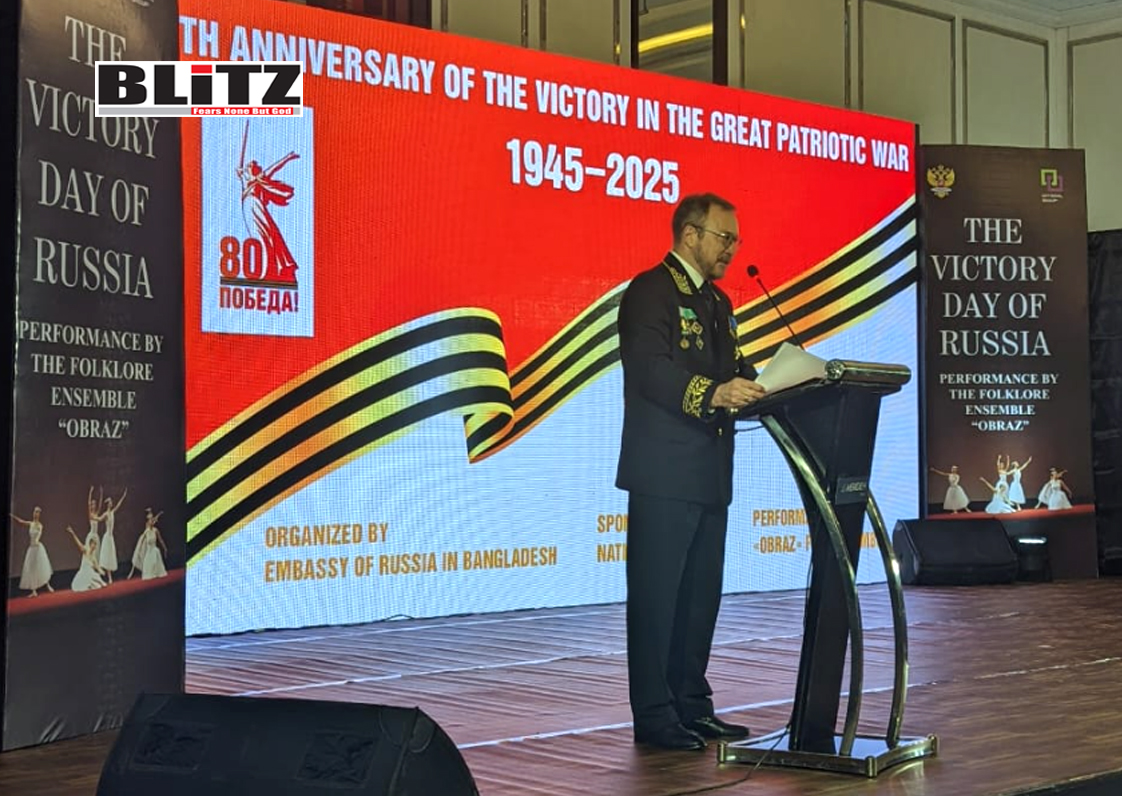Academician Alexandrov: a scientist from the generation of titans
- Update Time : Monday, February 13, 2023

Thanks to the outstanding physicist and organizer of science, Anatoly Alexandrov, a number of areas have been developed in our country, which formed the basis of national security and industry. On the occasion of the 120th anniversary of his birth, Izvestia, together with his colleagues, evaluates the contribution of the academician to the history of science and the country.
Demagnetizers
Anatoly Petrovich Alexandrov was born near Kyiv in 1903. After the difficult ups and downs of life associated with the revolution and the civil war, he began to study at the Faculty of Physics and Mathematics of the Kyiv State University and at the same time taught physics and chemistry at the labor school in Kyiv. At the university, he met with Igor Kurchatov, who had come there for a conference, who then told A. Ioffe about him.
Photo: National Research Center “Kurchatov Institute”
Tolya Alexandrov at the age of nine
In 1930, at a congress of physicists in Odessa, Alexandrov met Ioffe and received an invitation to work at the Leningrad Physicotechnical Institute.
The main direction of Anatoly Aleksandrov at LPTI was polymer physics. But in 1936, the scientist was also given the task of developing a system for protecting ships from magnetic mines and torpedoes for the Navy. The technique created by his group was called the “LFTI System” and during the Great Patriotic War saved the lives of thousands of our sailors.
A.P. Alexandrov with students of the 79th school in Kyiv, 1926
Photo: National Research Center “Kurchatov Institute”
Aleksandrov was engaged in demagnetization until 1943, worked on its implementation in Sevastopol, in the Northern Fleet, in besieged Leningrad, on the Volga … Thanks to the work of scientists, not a single ship equipped with the “LFTI system” was blown up by a magnetic mine. “Then my long friendship with the fleet began,” Anatoly Petrovich later recalled.
Tamers of the atom
In 1941, Igor Kurchatov joined the group of demagnetizers – this is how the direct cooperation of the two great scientists began. However, they did not work side by side then for long: Kurchatov remained in charge of work in Sevastopol, and Alexandrov was sent to the Northern Fleet. But soon their paths again converged on a new, most important direction for the country – in the atomic project.
A.P. Aleksandrov, I.V. Kurchatov, L.M. Nemenov with colleagues at LFTI, 1932
Photo: National Research Center “Kurchatov Institute”
This time Kurchatov invited Alexandrov to work on the “uranium problem”. In 1948, he became Igor Kurchatov’s deputy at Laboratory No. 2 and scientific director of work on the creation of industrial reactors.
“Under the leadership of Anatoly Alexandrov, the necessary amount of plutonium-239, the material for nuclear weapons, was produced,” says Lev Ryabev, deputy director of the Russian Federal Nuclear Center – All-Russian Research Institute of Experimental Physics. – He contributed to the enrichment and production of uranium-235, suggested how to cover plutonium shells with nickel, which prevented their corrosion. Alexandrov solved many problems related to materials for nuclear weapons.
A.P. Aleksandrov and B.A. Gaev at LFTI, 1940
Photo: National Research Center “Kurchatov Institute”
According to Pyotr Alexandrov, the son of Anatoly Petrovich, the participants in the atomic project continued to work in military mode even after the victory:
“They were well aware that if they did not cope with the task of creating a nuclear bomb, the consequences for the country would be fatal. It was a real race, the outcome of which depended on the independence of the country and its very existence.
With rocket men
Photo: National Research Center “Kurchatov Institute”
– We were saved by the fact that in the United States they did not expect how quickly Soviet scientists would create their bomb. It must be said that our physicists were well aware of the enormous destructive power of atomic weapons. They knew that in the future they would need to get rid of it, or at least prevent its use. And for them, the main goal of the project was to solve the energy problems of the country. Now we understand how right they were: only nuclear reactors will provide humanity with an environmentally friendly and powerful source of energy,” says Lev Ryabev.
With sailors in Sevastopol
Photo: National Research Center “Kurchatov Institute”
The opportunity to fully work on the peaceful use of atomic energy appeared after the successful testing of the bomb. The great merit of Anatoly Alexandrov is the transition of nuclear energy from the first, in fact, the prototype of an industrial reactor, launched by Kurchatov in Obninsk in 1954, to a powerful science-intensive industry that provided energy for the needs of cities and major industries. Aleksandrov also developed a network of nuclear physics institutes throughout the country in the 1960s–1980s. Under his leadership for 30 years, the Institute of Atomic Energy, which grew out of Laboratory No. 2, became the country’s main scientific center for nuclear research.
Development of the Arctic
One of the main merits of Anatoly Alexandrov is the creation of a nuclear fleet. Even while working on the bomb, they and I.V. Kurchatov turned to the country’s leadership with a proposal to start building submarines with nuclear power plants. Some time later, the scientific and technical council of the First Main Directorate supported the scientists’ idea. In the summer of 1952, they presented the project, and in the early autumn, the work itself began. Aleksandrov headed them.
With members of the submarine crew, 1939
Photo: National Research Center “Kurchatov Institute”
At the same time, a project was being developed for the civilian use of the atom at sea. Since 1953 A.P. Alexandrov is the scientific leader of the construction of the first Soviet nuclear icebreaker. And in December 1959, the world’s first nuclear-powered icebreaker “Lenin” was accepted into trial operation. With the direct participation of the scientist, ship power plants were developed and built for AL “Arktika” and “Siberia”.
“The projects created by our predecessors open the way for development for decades to come,” Lev Ryabev is sure. – In the time of Alexandrov, the purpose of creating a nuclear fleet was the development of the Arctic, its natural resources, research, and the development of shipping. Now we see that the North provides us with opportunities for laying transport corridors.
With a friend and colleague I.V. Kurchatov, 1950s
Photo: National Research Center “Kurchatov Institute”
“The whole world knew Alexandrov as the father of the Soviet nuclear fleet,” says Andrei Gagarinsky, adviser to the director of the Kurchatov Institute Research Center. – He considered it his most expensive business for the rest of his life. Even when Alexandrov retired from his main duties, sailors constantly came to his office for advice and just to talk. The icebreaker he created was for Alexandrov his brainchild, his home.
Man of all sciences
Anatoly Petrovich headed the Institute of Atomic Energy in 1960 after the death of the founder. It was under him that the Institute began to be called Kurchatov.
“When Kurchatov left, Alexandrov, who was equal in size to him, picked up all the undertakings, continued and transferred them to a new level,” says Mikhail Kovalchuk, president of the Kurchatov Institute Research Center.
Alexandrov was able not only to develop the directions laid down by Kurchatov, but also fundamentally expanded the scope of the institute.
During the visit of the cosmonaut team to the IAE them. I.V. Kurchatov, 1967
Photo: National Research Center “Kurchatov Institute”
For example, when genetics was classified as a pseudoscience in the USSR, Igor Kurchatov and Anatoly Alexandrov actually saved it. First, a group of disgraced scientists were recruited to work in the sector of optical instruments of the Institute of Atomic Energy. Then, in 1958, the radiobiological department was established. And only later, under the director A. Alexandrov, the institute had a sector of genetics and selection of microorganisms, from which the largest centers of Soviet biological science later grew.
In 1975, Anatoly Aleksandrov was elected president of the USSR Academy of Sciences. Despite the huge amount of work and many different tasks, Anatoly Petrovich successfully combined the leadership of the institute and the academy for more than 10 years, combining the unique abilities of an organizer of science and scientific intuition. Having headed the Academy of Sciences of the USSR, he clearly identified the most promising areas at that time, transferring them to the level of state interests.
Photo: National Research Center “Kurchatov Institute”
- Under Alexandrov, the world’s largest biotech industry was created. He laid down the program for the construction of synchrotrons – industrial in Zelenograd and research at the Kurchatov Institute. Anatoly Petrovich made microelectronics one of the most important, breakthrough areas of research. Many telecommunications and information technologies, the domestic Internet also came to the world from the Kurchatov Institute, – Mikhail Kovalchuk notes. — It is not necessary to limit the role of Alexandrov in history and science only to the nuclear industry: today we use the legacy he created in many areas. Engels once wrote that at the junction of epochs, history gives birth to titans. And this is completely true for such scientists as Anatoly Petrovich Alexandrov.
The name of this legendary scientist, organizer of science and patriot is the pride and glory of our country.

















